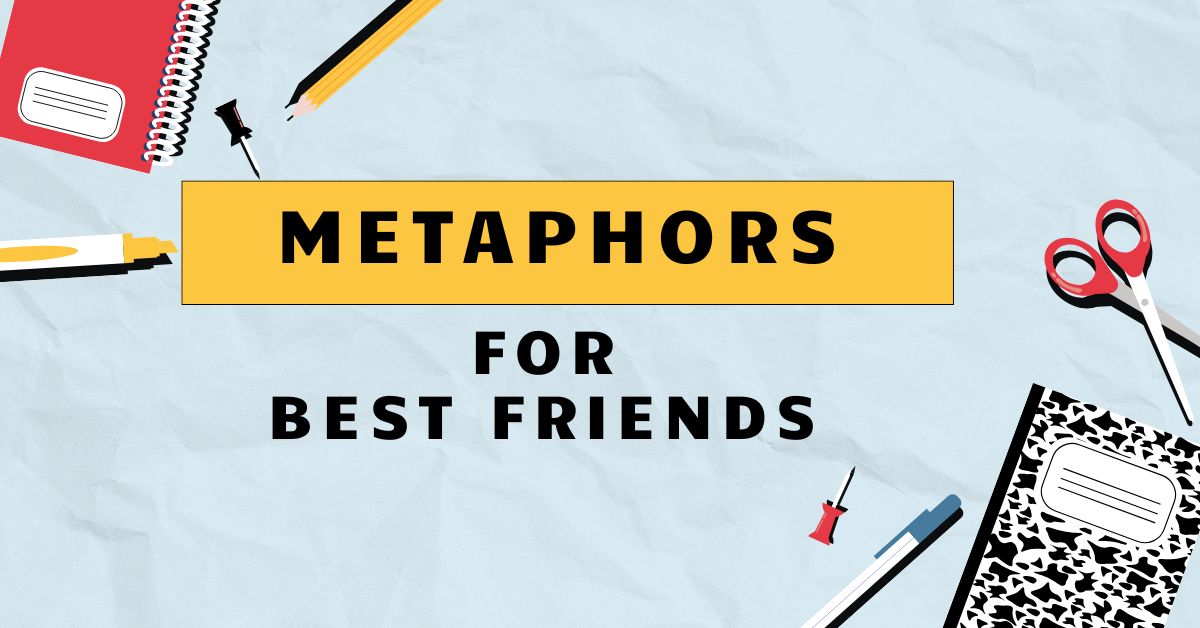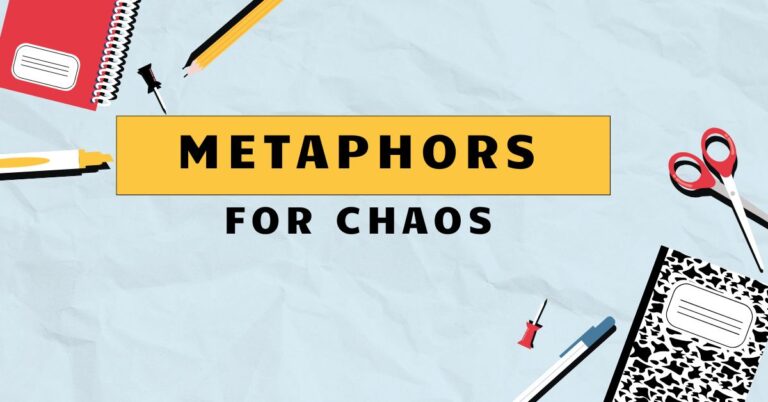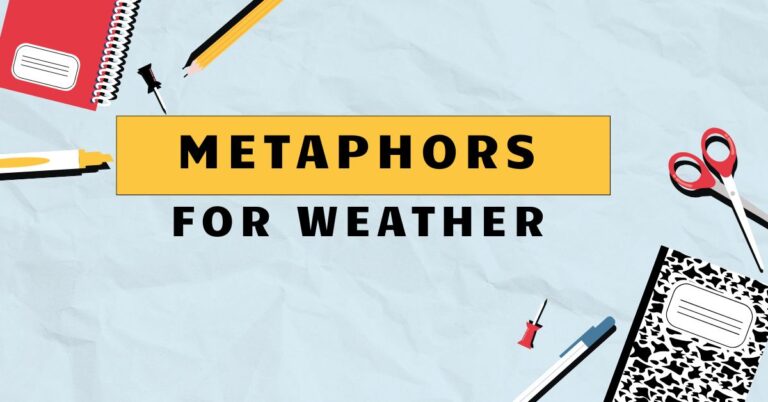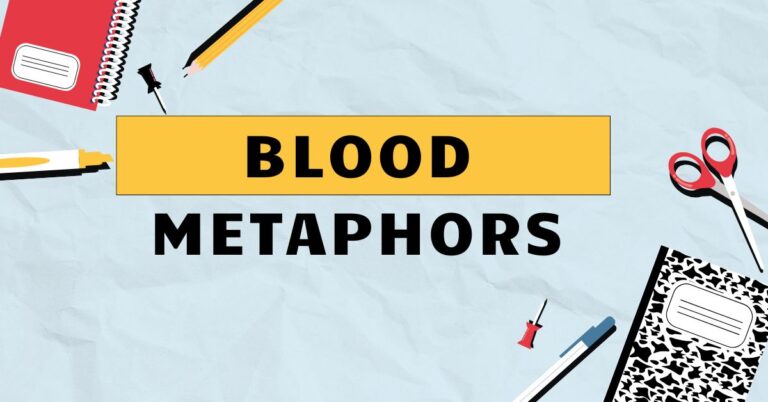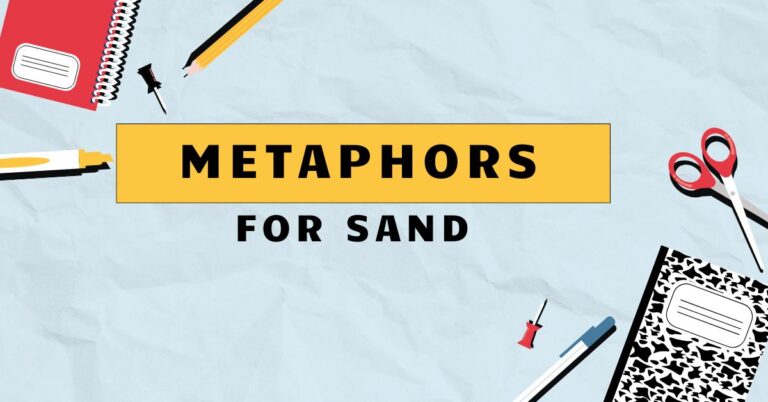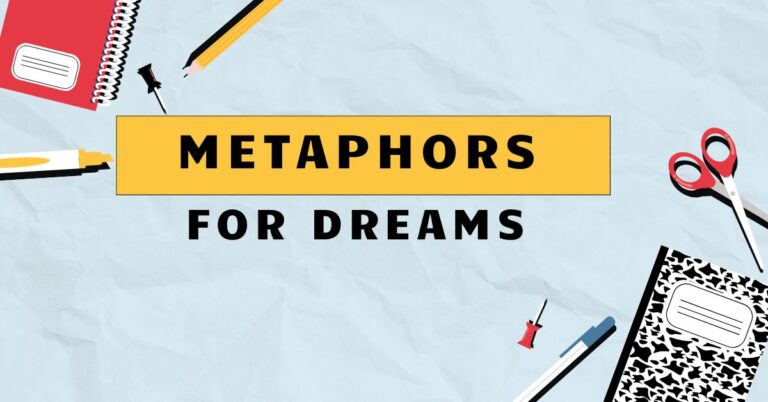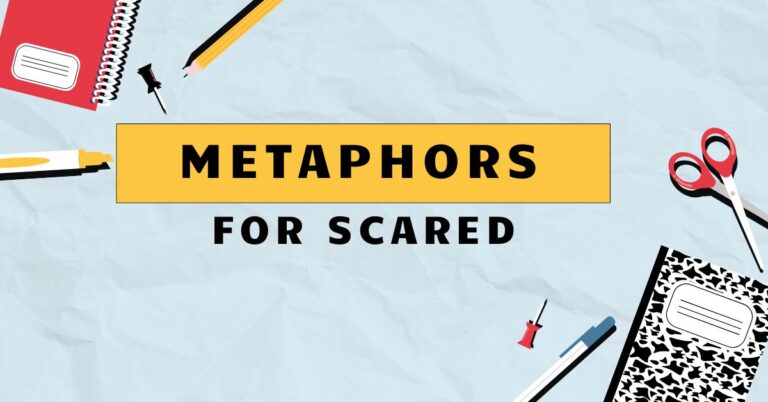37 Metaphors for Best Friends: Grammar and Usage Guide
Metaphors are powerful tools in language, allowing us to express complex emotions and relationships in vivid and relatable ways. When it comes to describing the bond of best friends, metaphors can add depth and color to our communication.
Understanding how these metaphors function grammatically and stylistically enhances our ability to appreciate and use them effectively. This guide explores the various types of metaphors used for best friends, their structural components, and how to use them correctly.
This article is suitable for English language learners, writers, and anyone interested in enriching their vocabulary and expressive capabilities.
Table of Contents
- Introduction
- Definition of Metaphor
- Classification of Metaphors
- Function of Metaphors
- Contexts for Metaphor Use
- Structural Breakdown
- Tenor and Vehicle
- Implied Metaphors
- Types and Categories of Metaphors for Best Friends
- Metaphors of Support
- Metaphors of Loyalty
- Metaphors of Growth
- Metaphors of Comfort
- Metaphors of Shared Experiences
- Examples of Metaphors for Best Friends
- Support Metaphor Examples
- Loyalty Metaphor Examples
- Growth Metaphor Examples
- Comfort Metaphor Examples
- Shared Experience Metaphor Examples
- Usage Rules
- Appropriateness and Context
- Avoiding Clichés
- Maintaining Consistency
- Common Mistakes
- Mixed Metaphors
- Inappropriate Metaphors
- Practice Exercises
- Exercise 1: Identifying Metaphors
- Exercise 2: Creating Metaphors
- Exercise 3: Correcting Mistakes
- Advanced Topics
- Extended Metaphors
- Dead Metaphors
- FAQ
- Conclusion
Definition of Metaphor
A metaphor is a figure of speech that directly compares two unrelated things without using “like” or “as.” It asserts that one thing is another, creating a vivid image or deeper understanding. Metaphors are essential for adding color, depth, and emotional resonance to language.
Classification of Metaphors
Metaphors can be classified based on their explicitness and structure. Some are direct, stating a clear comparison, while others are implied, requiring the reader to infer the connection.
Understanding these classifications helps in both interpreting and creating effective metaphors.
Function of Metaphors
The primary function of a metaphor is to transfer qualities from one thing to another, enhancing understanding and creating emotional impact. They can simplify complex ideas, evoke feelings, and make writing more engaging and memorable.
Metaphors allow us to see familiar things in new and insightful ways.
Contexts for Metaphor Use
Metaphors are appropriate in various contexts, including literature, poetry, everyday conversation, and even business communication. However, the appropriateness of a metaphor depends on the audience and the overall tone of the communication.
Overusing metaphors can also diminish their impact, so it’s important to use them judiciously.
Structural Breakdown
Metaphors are composed of two main elements: the tenor and the vehicle. Understanding these components is vital for analyzing and constructing effective metaphors.
Tenor and Vehicle
Thetenoris the subject being described (e.g., a best friend). Thevehicleis the object or concept used to describe the tenor (e.g., a rock).
The vehicle lends its qualities to the tenor, creating the metaphorical comparison. For example, in the metaphor “My best friend is a rock,” the best friend is the tenor, and the rock is the vehicle.
Implied Metaphors
An implied metaphor does not explicitly state the comparison but suggests it through subtle language. For example, instead of saying “My best friend is a lighthouse,” you might say, “My best friend guided me through the storm,” implying that the friend acts as a guiding light.
Implied metaphors can be more nuanced and require the reader to actively engage in interpreting the meaning.
Types and Categories of Metaphors for Best Friends
Metaphors used for best friends often fall into several categories, each emphasizing different aspects of the relationship. These categories include support, loyalty, growth, comfort, and shared experiences.
Metaphors of Support
These metaphors highlight the supportive nature of a best friend. They often use imagery of strength, stability, and reliability.
Examples include: “My best friend is my anchor,” or “She’s my backbone.” These metaphors emphasize the friend’s role in providing stability and strength during difficult times.
Metaphors of Loyalty
Loyalty metaphors focus on the unwavering dedication and faithfulness of a best friend. Images of steadfastness and commitment are common.
Examples include: “He’s my ride or die,” or “She’s my compass, always pointing me in the right direction.” These metaphors underscore the friend’s unwavering commitment and reliability.
Metaphors of Growth
These metaphors emphasize how a best friend contributes to personal development and learning. They often use imagery of nurturing, cultivation, and blossoming.
Examples include: “She’s the sunlight that helps me grow,” or “He’s the fertilizer for my dreams.” These metaphors highlight the friend’s positive influence on personal growth and development.
Metaphors of Comfort
Comfort metaphors highlight the soothing and reassuring presence of a best friend. Images of warmth, safety, and security are common.
Examples include: “She’s my safe harbor,” or “He’s my warm blanket on a cold day.” These metaphors emphasize the friend’s ability to provide comfort and reassurance during times of stress or difficulty.
Metaphors of Shared Experiences
These metaphors focus on the bond created through shared memories and adventures. They often use imagery of journeys, milestones, and inside jokes.
Examples include: “We’re two peas in a pod,” or “We’re partners in crime.” These metaphors emphasize the unique connection forged through shared experiences and memories.
Examples of Metaphors for Best Friends
Here are several examples of metaphors for best friends, categorized by the type of relationship aspect they emphasize. These examples demonstrate the variety and creativity that can be used to describe the unique bond between best friends.
Support Metaphor Examples
The following table provides examples of metaphors that illustrate the supportive nature of a best friend. Each metaphor highlights the friend’s role as a source of strength, stability, and encouragement.
| Metaphor | Explanation |
|---|---|
| She’s my anchor in the storm. | Implies that the friend provides stability and prevents being swept away by difficulties. |
| He’s my rock. | Suggests that the friend is a solid, dependable, and unwavering source of support. |
| She’s my backbone. | Indicates that the friend provides essential support and strength, just as a backbone supports the body. |
| He’s my shield against the world. | Implies that the friend protects and defends against external pressures and challenges. |
| She’s my lighthouse in the fog. | Suggests that the friend provides guidance and clarity during times of confusion and uncertainty. |
| He’s my personal cheerleader. | Indicates that the friend is always encouraging and supportive, boosting confidence and morale. |
| She’s my safety net. | Implies that the friend provides a sense of security and protection, catching you when you fall. |
| He’s my shoulder to cry on. | Suggests that the friend is a comforting presence during times of sadness and distress. |
| She’s my sounding board. | Indicates that the friend is a reliable person to bounce ideas off of and receive honest feedback. |
| He’s my fortress. | Implies that the friend provides a safe and secure place to retreat from the challenges of the world. |
| She’s my constant north star. | Suggests the friend provides unwavering guidance and direction in life. |
| He’s the scaffolding holding me up. | Implies the friend is a temporary but crucial support during a period of growth or challenge. |
| She’s the sturdy tree I lean on. | Suggests the friend is a strong and reliable source of comfort and support. |
| He’s the solid ground beneath my feet. | Implies the friend provides stability and security in a chaotic world. |
| She’s my life raft in a sea of troubles. | Indicates the friend is a source of rescue and support during difficult times. |
| He’s the bridge over my troubled waters. | Suggests the friend helps to overcome obstacles and navigate difficult situations. |
| She’s the wind beneath my wings. | Implies the friend empowers and supports one’s aspirations and dreams. |
| He’s my personal pit crew. | Indicates the friend provides the necessary support and assistance to keep moving forward. |
| She’s my steadfast companion. | Suggests the friend is a reliable and unwavering source of support. |
| He’s the bedrock of my happiness. | Implies the friend is a fundamental and essential part of one’s well-being. |
| She’s the hand that pulls me up. | Suggests the friend offers help and support during difficult times. |
| He’s my unwavering ally. | Implies the friend is a loyal and dependable supporter. |
| She’s my bulwark against despair. | Indicates the friend provides strong protection against feelings of hopelessness. |
Loyalty Metaphor Examples
The following table provides examples of metaphors that illustrate the loyal and steadfast nature of a best friend. Each metaphor highlights the friend’s unwavering commitment and dedication.
| Metaphor | Explanation |
|---|---|
| He’s my ride or die. | Indicates that the friend is someone who will stick with you through thick and thin, no matter what. |
| She’s my compass, always pointing me in the right direction. | Suggests that the friend provides guidance and helps to stay on the right path. |
| He’s my partner in crime. | Implies that the friend is someone with whom you share adventures and mischief. |
| She’s my confidante, keeper of my secrets. | Indicates that the friend is trustworthy and reliable in keeping personal information safe. |
| He’s my shadow, always there. | Suggests that the friend is a constant presence and always by your side. |
| She’s my blood sister, though we share no blood. | Implies a deep, familial bond and unwavering loyalty. |
| He’s my anchor in a stormy sea. | Suggests that the friend provides stability and prevents being swept away by difficulties. |
| She’s the glue that holds me together. | Indicates that the friend is essential in maintaining stability and cohesion in life. |
| He’s my north star, guiding me home. | Suggests that the friend provides unwavering direction and guidance. |
| She’s the constant in my ever-changing world. | Implies that the friend is a stable and reliable presence amidst life’s uncertainties. |
| He’s the oath I swore to myself. | Suggests an unbreakable commitment and loyalty to the friendship. |
| She’s the vault where I store my heart. | Indicates complete trust and security in the friend’s care. |
| He’s the silent promise we made. | Implies a deep, unspoken understanding and commitment to the friendship. |
| She’s the knot that binds our souls. | Suggests a deep and unbreakable connection between friends. |
| He’s the unwritten chapter in my life. | Indicates that the friend is an integral and ongoing part of one’s story. |
| She’s the guardian of my well-being. | Implies the friend is protective and concerned for one’s happiness and safety. |
| He’s the sentinel at my gate. | Suggests the friend is watchful and protective against external threats. |
| She’s the keeper of our sacred bond. | Indicates the friend values and protects the special connection between them. |
| He’s the knight in shining armor for my soul. | Implies the friend is a heroic and protective figure in one’s life. |
| She’s the sacred trust I cherish. | Suggests the friend is deeply valued and respected. |
| He’s the unwavering flame in my life. | Implies the friend provides constant warmth and guidance. |
| She’s the silent vow I keep. | Indicates a deep, unspoken commitment to the friendship. |
| He’s the loyal subject of my heart. | Suggests the friend is deeply respected and cherished. |
Growth Metaphor Examples
The following table provides examples of metaphors that illustrate how a best friend contributes to personal growth and development. Each metaphor highlights the friend’s positive influence and nurturing presence.
| Metaphor | Explanation |
|---|---|
| She’s the sunlight that helps me grow. | Implies that the friend provides the necessary encouragement and support for personal development. |
| He’s the fertilizer for my dreams. | Suggests that the friend helps to nourish and cultivate one’s aspirations. |
| She’s the water that nourishes my soul. | Indicates that the friend provides essential sustenance for emotional and spiritual well-being. |
| He’s the gentle rain that helps me blossom. | Suggests that the friend’s influence is subtle but essential for growth and flourishing. |
| She’s the gardener of my spirit. | Implies that the friend carefully tends to one’s emotional and spiritual needs, fostering growth. |
| He’s the wind that carries my seeds of potential. | Suggests that the friend helps to spread and realize one’s potential and talents. |
| She’s the soil in which my roots grow strong. | Indicates the friend provides a nurturing and supportive foundation for personal growth. |
| He’s the sharpener of my wit. | Suggests the friend challenges and enhances one’s intellect and humor. |
| She’s the mirror reflecting my best self. | Implies the friend helps one to see and appreciate their positive qualities and potential. |
| He’s the ladder that helps me climb higher. | Suggests the friend supports and enables one’s progress and achievements. |
| She’s the tutor of my ambitions. | Indicates the friend guides and supports one’s aspirations and goals. |
| He’s the catalyst for my transformation. | Suggests the friend sparks significant personal change and growth. |
| She’s the incubator for my ideas. | Implies the friend provides a nurturing environment for developing and refining ideas. |
| He’s the sculptor of my character. | Suggests the friend helps to shape and refine one’s personality and values. |
| She’s the lighthouse guiding me to shore. | Indicates the friend provides direction and clarity during times of uncertainty. |
| He’s the architect of my dreams. | Suggests the friend helps to design and build one’s aspirations and goals. |
| She’s the muse of my creativity. | Implies the friend inspires and encourages one’s creative endeavors. |
| He’s the compass pointing to my true north. | Suggests the friend helps one to stay aligned with their values and purpose. |
| She’s the mentor who guides my path. | Indicates the friend provides wise counsel and support on one’s journey. |
| He’s the beacon illuminating my potential. | Implies the friend helps one to recognize and develop their hidden talents. |
| She’s the spring that feeds my spirit. | Suggests the friend provides constant renewal and inspiration. |
| He’s the anvil upon which I forge my strength. | Indicates the friend helps one to develop resilience and fortitude. |
Comfort Metaphor Examples
The following table provides examples of metaphors that illustrate the comforting and reassuring presence of a best friend. Each metaphor highlights the friend’s ability to provide warmth, safety, and solace.
| Metaphor | Explanation |
|---|---|
| She’s my safe harbor. | Implies that the friend provides a place of refuge and security during difficult times. |
| He’s my warm blanket on a cold day. | Suggests that the friend provides comfort and warmth when feeling vulnerable or distressed. |
| She’s my cozy fireplace in winter. | Indicates that the friend provides warmth, comfort, and a sense of home. |
| He’s my cup of hot cocoa on a rainy day. | Suggests that the friend provides simple pleasures and comfort during gloomy times. |
| She’s my favorite old sweater. | Implies that the friend is familiar, comfortable, and brings a sense of ease. |
| He’s my tranquil oasis in the desert of life. | Suggests that the friend provides peace and respite amidst life’s challenges. |
| She’s my calming melody. | Indicates that the friend brings peace and tranquility to one’s mind and emotions. |
| He’s my peaceful sunset after a long day. | Suggests that the friend brings relaxation and contentment at the end of a stressful day. |
| She’s my soft pillow to rest my head. | Implies that the friend provides comfort and support when feeling tired or overwhelmed. |
| He’s my gentle breeze on a hot summer day. | Suggests that the friend provides relief and refreshment during times of stress or discomfort. |
| She’s my serene mountain lake. | Indicates that the friend provides a sense of calm, peace, and tranquility. |
| He’s my comforting lullaby. | Suggests that the friend soothes and calms one’s anxieties and fears. |
| She’s my healing balm. | Implies that the friend helps to soothe and heal emotional wounds. |
| He’s my sheltering tree in the storm. | Suggests that the friend provides protection and security during difficult times. |
| She’s my quiet corner in a noisy world. | Indicates that the friend provides a peaceful and private space to retreat and recharge. |
| He’s my soothing cup of tea. | Suggests that the friend provides comfort and relaxation. |
| She’s my reassuring hand to hold. | Implies that the friend provides support and comfort during moments of fear or uncertainty. |
| He’s my steady heartbeat in a frantic world. | Suggests that the friend provides stability and reassurance amidst chaos. |
| She’s my favorite old book. | Indicates that the friend is familiar, comforting, and provides a sense of ease and contentment. |
| He’s my gentle rain after a drought. | Implies the friend provides relief and renewal when one is emotionally depleted. |
| She’s my silent guardian. | Suggests the friend is a constant, comforting presence without needing to say a word. |
Shared Experience Metaphor Examples
The following table provides examples of metaphors that illustrate the bond created through shared memories and adventures with a best friend. Each metaphor highlights the unique connection forged through shared experiences.
| Metaphor | Explanation |
|---|---|
| We’re two peas in a pod. | Implies that the friends are very similar and share a close bond. |
| We’re partners in crime. | Suggests that the friends share adventures and mischief together. |
| We’re two sides of the same coin. | Indicates that the friends are complementary and inseparable. |
| We’re a matched set. | Suggests that the friends are perfectly suited for each other. |
| We’re a dynamic duo. | Implies that the friends make a powerful and effective team. |
| We’re the peanut butter and jelly of friendships. | Suggests that the friends are a perfect and classic combination. |
| We’re the sun and moon, always connected. | Indicates that the friends are always in each other’s lives, even when apart. |
| We’re the stars in each other’s sky. | Suggests that the friends bring light and joy to each other’s lives. |
| We’re the chapters in the same book. | Implies that the friends share a common story and journey. |
| We’re the melody and harmony of a song. | Suggests that the friends complement each other and create something beautiful together. |
| We’re the puzzle pieces that fit perfectly. | Indicates that the friends complete each other and create a harmonious whole. |
| We’re the branches of the same tree. | Suggests that the friends share a common root and are deeply connected. |
| We’re the echoes in the same canyon. | Implies that the friends resonate with each other and share a deep understanding. |
| We’re the sailors on the same ship. | Suggests that the friends are navigating life’s journey together. |
| We’re the climbers on the same mountain. | Indicates that the friends are striving towards common goals and supporting each other’s ascent. |
| We’re the dancers in the same rhythm. | Suggests that the friends move through life together in harmony and sync. |
| We’re the artists with the same canvas. | Implies that the friends are creating a shared masterpiece together. |
| We’re the explorers on the same quest. | Suggests that the friends are embarking on adventures and discoveries together. |
| We’re the laughter in the same joke. | Implies that the friends share a unique sense of humor and inside jokes. |
| We’re the memories in the same scrapbook. | Indicates that the friends cherish their shared experiences and memories. |
| We’re the threads in the same tapestry. | Suggests the friends contribute to a rich and intricate shared life. |
Usage Rules
Using metaphors effectively requires understanding certain rules and guidelines. These rules help ensure that metaphors are clear, appropriate, and impactful.
Appropriateness and Context
The appropriateness of a metaphor depends on the context and audience. Consider the tone of the communication and the knowledge level of the audience.
A complex or obscure metaphor may be inappropriate for a general audience, while a simple metaphor may lack impact in a more sophisticated setting. Choose metaphors that resonate with the intended audience and enhance the message without causing confusion.
Avoiding Clichés
Clichéd metaphors are overused and have lost their impact. Examples include “He’s as strong as an ox” or “She’s as busy as a bee.” Instead, strive for originality and create fresh, unique metaphors that capture the essence of the relationship in a novel way.
Original metaphors make your writing more engaging and memorable.
Maintaining Consistency
Maintain consistency within a metaphor. Avoid mixing different images or ideas that clash with each other.
A mixed metaphor can create confusion and weaken the overall message. Ensure that the vehicle aligns with the tenor and creates a coherent and understandable comparison.
Common Mistakes
Several common mistakes can undermine the effectiveness of metaphors. Recognizing and avoiding these mistakes is crucial for using metaphors correctly.
Mixed Metaphors
A mixed metaphor combines two or more incompatible metaphors, creating a nonsensical or humorous effect. For example, “Let’s nip it in the bud before it snowballs” mixes the metaphors of pruning a plant and a snowball rolling downhill.
Mixed metaphors should be avoided as they detract from the clarity and impact of the writing.
Incorrect: He’s burning the candle at both ends to keep his nose to the grindstone.
Correct: He’s burning the candle at both ends.
Correct: He’s keeping his nose to the grindstone.
Inappropriate Metaphors
An inappropriate metaphor is one that is unsuitable for the context or audience, or that creates an offensive or insensitive comparison. For example, comparing a best friend to something negative or demeaning would be inappropriate.
Always consider the implications and connotations of the metaphor before using it.
Inappropriate: My best friend is a leech.
Appropriate: My best friend is my rock.
Practice Exercises
These practice exercises will help you solidify your understanding of metaphors for best friends. Each exercise focuses on different aspects of metaphor usage, from identification to creation and correction.
Exercise 1: Identifying Metaphors
Identify the metaphors in the following sentences. For each identified metaphor, explain what is being compared.
| Question | Answer |
|---|---|
| 1. She is the sunshine on my cloudy days. | Metaphor: “sunshine.” Comparison: Friend to a source of light and happiness. |
| 2. He’s my anchor, keeping me grounded. | Metaphor: “anchor.” Comparison: Friend to a source of stability. |
| 3. Our friendship is a sturdy bridge. | Metaphor: “sturdy bridge.” Comparison: Friendship to a strong connection. |
| 4. She is the wind beneath my wings. | Metaphor: “wind beneath my wings.” Comparison: Friend to a source of empowerment. |
| 5. He is a beacon in my darkest night. | Metaphor: “beacon.” Comparison: Friend to a guiding light. |
| 6. She’s the melody in the soundtrack of my life. | Metaphor: “melody”. Comparison: Friend to a pleasant and harmonious part of life. |
| 7. He’s the steady hand that guides my ship. | Metaphor: “steady hand”. Comparison: Friend to direction and control. |
| 8. She’s the roots that ground my soul. | Metaphor: “roots”. Comparison: Friend to stability and foundation. |
| 9. He’s the sail that catches my dreams. | Metaphor: “sail”. Comparison: Friend to the means of achieving dreams. |
| 10. She’s the fire that warms my heart. | Metaphor: “fire”. Comparison: Friend to warmth and affection. |
Exercise 2: Creating Metaphors
Create a metaphor for a best friend based on the following prompts:
| Prompt | Answer |
|---|---|
| 1. A friend who always makes you laugh. | He’s the comedian in my otherwise serious life. |
| 2. A friend who is always honest with you. | She’s the mirror that reflects my true self. |
| 3. A friend who is always there to listen. | He’s the open book where I confide my secrets. |
| 4. A friend who encourages you to take risks. | She’s the springboard that launches me into new adventures. |
| 5. A friend who celebrates your successes. | He’s the confetti that showers me in joy. |
| 6. A friend who provides unwavering support. | She’s the concrete foundation beneath my ambitions. |
| 7. A friend who shares your sense of adventure. | He’s the co-pilot on my journey of discovery. |
| 8. A friend who understands you without words. | She’s the unspoken language of my heart. |
| 9. A friend who makes difficult times easier. | He’s the silver lining on my darkest clouds. |
| 10. A friend who inspires you to be a better person. | She’s the guiding star that leads me to my best self. |
Exercise 3: Correcting Mistakes
Identify and correct the mixed or
inappropriate metaphors in the following sentences:
| Question | Answer |
|---|---|
| 1. Our friendship is a rollercoaster that always hits the nail on the head. | Mistake: Mixed metaphor. Correct: Our friendship is a rollercoaster. OR Our friendship always hits the nail on the head. |
| 2. He’s a real snake in the grass, my best friend. | Mistake: Inappropriate metaphor. Correct: He’s a loyal companion, my best friend. |
| 3. She’s the North Star, guiding me while also being a thorn in my side. | Mistake: Mixed metaphor. Correct: She’s the North Star, guiding me. OR She’s a constant, yet a thorn in my side. |
| 4. He’s my rock, but sometimes he throws me under the bus. | Mistake: Inconsistent imagery. Correct: He’s my rock, always there for me. |
| 5. She’s my sunshine, but also a dark cloud. | Mistake: Contradictory metaphor. Correct: She’s my sunshine, always brightening my day. |
Advanced Topics
For those looking to deepen their understanding of metaphors, exploring advanced topics such as extended metaphors and dead metaphors can provide additional insight.
Extended Metaphors
An extended metaphor is a metaphor that is developed over several lines or throughout an entire work. It allows for a more complex and nuanced comparison, creating a richer and more layered meaning.
Extended metaphors can be particularly effective in poetry and literature, where they can serve as a central theme or motif.
Example:
My best friend is a garden:
In spring, her laughter blooms like vibrant flowers,
In summer, her warmth shines like the golden sun,
In autumn, her wisdom falls like gentle rain,
In winter, her strength stands like steadfast trees.
Dead Metaphors
A dead metaphor is a metaphor that has become so overused that it has lost its figurative meaning and is now used as a literal expression. Examples include “falling in love” or “the heart of the matter.” Dead metaphors are often unnoticed and rarely evoke a strong image or emotional response.
While they are a natural part of language evolution, it’s important to be aware of them and avoid using them in situations where a more vivid and original metaphor would be more effective.
FAQ
Here are some frequently asked questions about metaphors for best friends:
Q: Can a metaphor be too complex?
A: Yes, a metaphor can be too complex if it is difficult for the audience to understand or if it distracts from the main message. Simplicity and clarity are key to effective communication.
Q: How can I make my metaphors more original?
A: To create original metaphors, think outside the box and consider unusual or unexpected comparisons. Look for unique qualities or characteristics of your best friend and try to connect them to unrelated objects or concepts.
Q: Is it okay to use more than one metaphor in a sentence?
A: While it is possible to use more than one metaphor in a sentence, it’s important to ensure that they are compatible and do not create a mixed metaphor. Use multiple metaphors sparingly and with careful consideration.
Q: How do I know if a metaphor is inappropriate?
A: A metaphor is inappropriate if it is offensive, insensitive, or demeaning. Consider the implications and connotations of the metaphor and ensure that it aligns with the intended message and tone.
Q: Can metaphors be used in formal writing?
A: Yes, metaphors can be used in formal writing, but they should be used judiciously and with careful consideration. Choose metaphors that enhance the message and are appropriate for the audience and context.
Conclusion
Metaphors are powerful tools for expressing the depth and complexity of the bond between best friends. By understanding the different types of metaphors, their structural components, and how to use them correctly, you can enhance your writing and communication skills.
Whether you’re crafting a heartfelt message, writing a poem, or simply describing your friendship, metaphors can add color, depth, and emotional resonance to your words. Remember to choose metaphors that are appropriate, original, and consistent, and avoid common mistakes such as mixed metaphors and clichés.
With practice and attention to detail, you can master the art of using metaphors to celebrate the unique and special relationship you share with your best friend.

